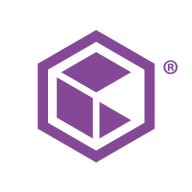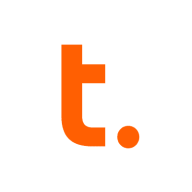

Commvault Cloud and Teradata compete in the data management and analytics categories. Commvault Cloud has an advantage in seamless cloud integration and automated updates, while Teradata is leading with its powerful parallel processing and query execution.
Features: Commvault Cloud excels with features like backup over dedicated channels, global deduplication, and a single platform for managing diverse systems. It integrates well with cloud services, providing automated updates with no disruption. Teradata offers fast query execution and parallel processing, utilizing an architecture that optimizes performance and scalability for efficient business insights.
Room for Improvement: Commvault Cloud is noted for its complexity, needing enhancements in its user interface and documentation to accommodate different user expertise levels. Maintenance requires significant resources. Teradata challenges include high pricing and cloud integration issues. Users suggest improvements in analytical functions and user accessibility to match the pricing level.
Ease of Deployment and Customer Service: Commvault Cloud is flexible across private, hybrid, and public clouds with good customer service and support. Teradata's deployment is primarily on-premise, with gradual cloud improvements, and customer service is rated well overall despite some complexities in setup and cloud transition.
Pricing and ROI: Commvault Cloud offers competitive pricing with advanced licensing models that provide value to mid and large enterprises, albeit not the cheapest. Its ability to consolidate systems offers long-term cost efficiencies. Teradata is noted for high costs tied to its powerful data processing, which is justified but can limit accessibility for smaller enterprises. Both platforms could improve their cost-effectiveness.
We have realized a return on investment, with a reduction of staff from 27 to eight, and our current return on investment is approximately 14%.
The number of people who know Commvault Cloud is lesser compared to Veeam.
Customer support has very closed departments, requiring us to shuffle between them to get one thing done because representatives have limited accessibility.
The customer support for Teradata has been great.
Customer support is very good, rated eight out of ten under our essential agreement.
The technical support from Teradata is quite advanced.
This expansion can occur without incurring downtime or taking systems offline.
Scalability is complex as you need to purchase a license and coordinate with Teradata for additional disk space and CPU.
Teradata's scalability is great; it's been awesome.
I have not faced any downtimes with Commvault Cloud.
Commvault Cloud is highly stable, and I would rate it a ten out of ten.
I find the stability to be almost a ten out of ten.
The workload management and software maturity provide a reliable system.
I feel that the support is not yet up to the mark, with not enough professional engineers to provide assistance.
The most challenging aspect is finding Teradata resources, so we are focusing on internal training and looking for more Teradata experts.
Unlike SQL and Oracle, which have in-built replication capabilities, we don't have similar functionality with Teradata.
Commvault Cloud is expensive, and there is room for the price to be 10-15 percent lower than what they are charging currently.
Initially, it may seem expensive compared to similar cloud databases, however, it offers significant value in performance, stability, and overall output once in use.
Teradata is much more expensive than SQL, which is well-performed and cheaper.
We spent roughly $295,000 on setup costs.
We can back up unlimited TBs due to our per node license.
Other features include endpoint solutions, integration with Office 365, ransomware protection, archival for long-term retention, and no ingress or egress charges.
Teradata's security helps our organization meet compliance requirements such as GDPR and IFRS, and it is particularly essential for revenue contracting or revenue recognition.
The data mover is valuable over the last two years as it allows us to achieve data replication to our disaster recovery systems.
| Product | Market Share (%) |
|---|---|
| Commvault Cloud | 6.0% |
| Teradata | 0.3% |
| Other | 93.7% |


| Company Size | Count |
|---|---|
| Small Business | 57 |
| Midsize Enterprise | 24 |
| Large Enterprise | 81 |
| Company Size | Count |
|---|---|
| Small Business | 26 |
| Midsize Enterprise | 12 |
| Large Enterprise | 49 |
Commvault Cloud is the ultimate cyber resilience platform built to meet the demands of the hybrid
enterprise. Beyond its core functionality of data backup and recovery across diverse workloads, including applications, databases, virtual machines, and files, Commvault Cloud stands out as a robust defense against ransomware. Going beyond backup, the platform integrates advanced data security features such as encryption, access control, and threat detection, safeguarding against unauthorized access and cyber threats.
With tools for data management, classification, and migration, businesses can optimize storage costs, enhance accessibility, and comply with regulations seamlessly. Boasting cloud integration with major providers like AWS, Azure, and Google Cloud, Commvault Cloud leverages the scalability and flexibility of the cloud for comprehensive data protection and management. The platform's automation capabilities streamline tasks, and its reporting and analytics features provide valuable insights into data usage, potential risks, and optimization strategies. Commvault Cloud is not just a security tool; it is a key component of cyber resilience, enabling organizations to not only protect against cyberattacks but also recover swiftly and minimize the impact of incidents. Elevate your cyber resilience strategy with Commvault Cloud.
Teradata is a powerful tool for handling substantial data volumes with its parallel processing architecture, supporting both cloud and on-premise environments efficiently. It offers impressive capabilities for fast query processing, data integration, and real-time reporting, making it suitable for diverse industrial applications.
Known for its robust parallel processing capabilities, Teradata effectively manages large datasets and provides adaptable deployment across cloud and on-premise setups. It enhances performance and scalability with features like advanced query tuning, workload management, and strong security. Users appreciate its ease of use and automation features which support real-time data reporting. The optimizer and intelligent partitioning help improve query speed and efficiency, while multi-temperature data management optimizes data handling.
What are the key features of Teradata?In the finance, retail, and government sectors, Teradata is employed for data warehousing, business intelligence, and analytical processing. It handles vast datasets for activities like customer behavior modeling and enterprise data integration. Supporting efficient reporting and analytics, Teradata enhances data storage and processing, whether deployed on-premise or on cloud platforms.
We monitor all Backup and Recovery reviews to prevent fraudulent reviews and keep review quality high. We do not post reviews by company employees or direct competitors. We validate each review for authenticity via cross-reference with LinkedIn, and personal follow-up with the reviewer when necessary.